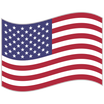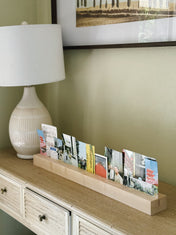Floating corner shelves are a great way to maximize the space you have. Sometimes, a complete renovation isn’t in the budget, so you’ve got to make the most of your space and current layout — which is where floating corner shelves come into play. Floating corner shelves maximize wall space and help you utilize every inch of your room.
Especially in kitchens and laundry rooms, corners created above countertops or between cabinets can become dead zones. These zones are too deep to be practical for daily use and can’t be used for functional cabinets. Using floating corner shelves in these spaces can be a space-optimizing game-changer.
These often-overlooked nooks can become valuable storage areas with the right shelving solutions. Installing floating corner shelves allows you to transform an unused corner into a functional and stylish storage space.
Whether you want to declutter a small room or add a decorative touch to a larger space, floating corner shelves offer versatility and efficiency. From showcasing your favorite decor items to storing everyday essentials, these shelves can help you make the most of every inch of your home.
How to Install Floating Corner Shelves
When installing floating shelves in a corner, you must start by measuring the space.
Start by measuring from where you want the first shelf to start to the corner. Then, take the exact measurement of the second wall. Write those lengths down.
You will likely have two different lengths written, but in some cases, those initial length measurements will be the same.
Now, don’t place your custom floating corner shelf order just yet; you need to do some math to correct your measurements before placing your order.
You need to determine the depth of your shelves. Once you know what depth you’d like your shelves to be, subtract that depth from the length of the two.
For example, if I need a shelf that covers 35” on wall one and 20” on wall two, and my shelves will be ten inches deep, I will subtract ten inches from that 35” shelf. My final shelf length measurements will be 25” for wall one and 20” for wall two.
When it comes time to install those shelves, you will install the shorter of the two shelves first and take it to the corner, then the more extended shelf to touch the edge of the shorter shelf.
This process can be tricky, so if you have any questions while taking your measurements for your custom floating corner shelves, you can email our support team at support@ultrashelf.com or use the live chat feature on our website. Our team of experts is here to help you ensure every measurement is perfect.
How to Style Floating Corner Shelves
Because the brackets for floating corner shelves are entirely hidden, you have more space to style them. Not having to navigate around exposed brackets maximizes your shelves' form and functionality.
Our favorite method for styling shelves starts with considering what the function of the space is. We recently styled corner shelves in a home library. The only function the shelves in the library needed to serve was to hold a whole lot of books, so we met that need first.
Once we had collected the books and placed them on the shelves, we layered in items — like a bust of Helen, storage boxes, and travel memorabilia.
This ensured that our shelves both served their function and were aesthetically pleasing.
The process is the same in any other room we tackle. We always first look for an aesthetic way to meet function, then layer in all the extras that personalize a space.
In a laundry room, we start by finding an aesthetically pleasing way to display soaps and sprays. In the kitchen, we add essentials like cups, bowls, bottles, or baking supplies. You get the pattern.
Once you have all the essentials on your shelves, it's time to rearrange. We rarely get a shelf right on the first go. We usually take everything off the shelves and put everything back on over and over until we have the exact right balance.
As long as we remember to keep the essentials on the shelves at an accessible height, the rest usually fall into place after we rearrange.

Tips from Our Stylist
If you’re stuck when it comes to decorating your floating corner shelves, we have a few quick tips to get you out of a design rut.
- Head to the internet to look for inspo, but if that doesn’t work, explore buildings around you that you love. We always find inspiration walking downtown in a new city.
- Don’t try to fill the corner on your floating corner shelves; it’s deep, and your decor can easily get lost in shadow. Instead, bring your decor forward, and don’t worry about filling the space behind it.
- Test out a design layout for a few days. Sit with it. If you don’t like it, you can always change it.
- Ask for helpful opinions from friends and family members whose design eye you trust.
-
Look at other areas of your home that you love and see if you can identify what you love about that space, and then try to bring some of those elements to your corner shelves.
Picking the Right Wood Type for Your Floating Corner Shelves
Picking the right wood type and stain for your space is essential if you want your floating corner shelves to blend with your design and overall home aesthetic seamlessly. Different wood types bring different characteristics to your space and can either enhance or detract from your overall design.
For example, Alder is a more rustic wood type that is perfect for modern farmhouse homes, cabins, and vintage homes — anyone looking for a warm touch of nature.
Our lightest wood type, Maple is more modern and sleek, pairing well with homes with minimal, japandi, or scandi-inspired design aesthetics.
Walnut is a classic and enhances traditional, vintage, or transitional homes, while White Oak is versatile and works in various spaces, from farmhouses to ultra-modern ones.
Once you know the wood type you want for your custom floating corner shelves, selecting the right finish is essential.
Your home will have a warm, cool, or neutral undertone. Even if your walls are white throughout your house, that white will still carry a warm, cool, or neutral undertone.
One way to ensure that your selected shelves will work well in your space is to match the undertone of your floating shelf stain to the undertone of your home.
If your space has warm undertones, opt for a Nature or Natural stain or one of our many other warm stains. If your space has cool tones, we have plenty of whitewashed or grey stains that help balance out the wood's natural warm tones.
For neutral tones, check out White Oak Umber Grey and Bleached Walnut. These shelves bring cool and warm tones to play, creating a soft, balanced look that plays well in any space.
If you’re unsure which wood type and stain to select, we have one word: samples. Samples are a great way to ensure your chosen shelves will work in your space.
Take your sample and check it several times in the room where you install the shelves at different times. Morning light is cool, and evening light is warm, and each change in lighting will slightly change the look of your shelves.
The color of the paint on your walls and the furniture in your room can ultimately impact how your corner floating shelves look, so ordering a sample allows you to see precisely how different wood types and stains reflect in your space.
If you want painted floating corner shelves, there are a few ways to get exactly what you need.
Ultra Shelf offers custom-painted floating corner shelves in any Benjamin Moore or Sherwin-Williams color. We also offer primed shelves so that you can paint them on-site. This is our favorite way to get a perfect sheen match that blends seamlessly with the wall.
The best way to ensure that your space feels cohesive is to start with the perfect shelf color base for your home, whether wood or paint.
Conclusion
If you have an Ultra Shelf or already have your floating corner shelves. Be sure to learn more about installing and caring for your floating shelves at ultrashelf.com









